Here is the Volume 5 of Hockey from When you watch something, visit us first! Mr. Manabu YAMASHITA, former Coach of Japanese men’s national Hockey team “Samurai Japan”, told us about the Theory of Defense in Hockey match this time. This is the combined version of Part 7-1 through 7-5 on our YouTube channel.
In Vol.4, we learned about the theory of the Offense in the Hockey Match.
This time, with the cooperation of Japan Hockey Association, Mr. Manabu YAMASHITA, former Coach of Japanese men’s national Hockey team “Samurai Japan”, told us about the theory of the Defense contrarily. Mr. YAMASHITA was the Captain of “Samurai Japan” at Tokyo 2020 Games, and is now back in active and now is a member of it again.
We would like to thank Japan Hockey Association, especially Head Coach of Samurai Japan, Mr. Akira TAKAHASHI, for their great help in making this video. We would like to express our sincere gratitude.
.png)
Part 7-1: Principle of Defense (DF)
In Hockey, when on Defense (DF), it is important to prevent the opponent from entering their own Circle.

Of course, it might be thought that the opponent will not be able to do anything if they all defend their Circle firmly as a team has 11 players, including the goalkeeper (GK), but in Hockey, the ball is small and fast, so even if a well skilled player tries to take the ball from the opponent by receiving it, such player may make a mistake due to the impact when it hits the ball if the ball is powerful and the ball may go into Circle, therefore, the more people are around Circle, the more likely it is that a situation will arise where players do not know who will touch the ball next. And, as I mentioned, the ball is small and fast, so it is very difficult to see.
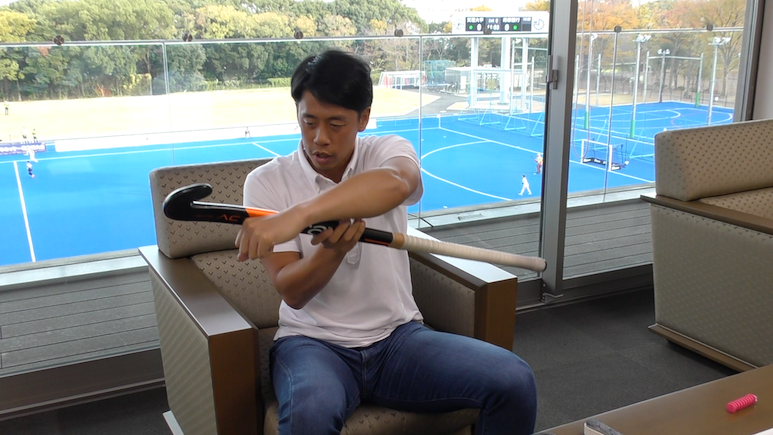
In this sense, I would have to say that it is honestly difficult to defend Circle with a large number of DF players.
The basic principle is to take the ball from the opponent in deep area and attack, because it allows to take the ball without risk from point of view of DF as well. This is the opposite of the Offense (OF) pattern which I mentioned earlier, so the DF must keep in mind that the opponent will attack in this way.
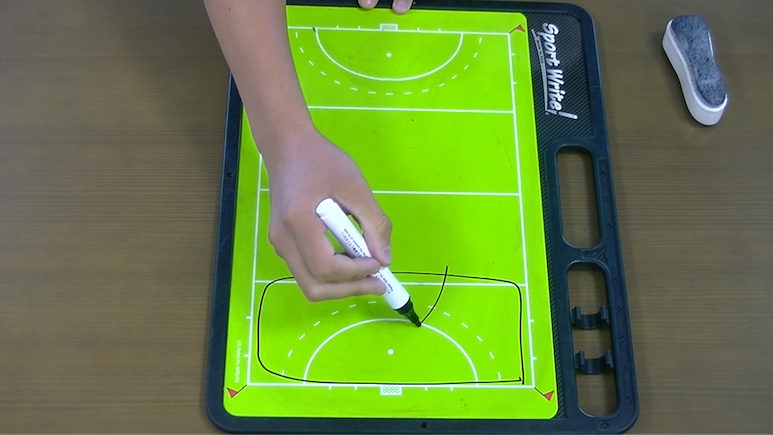
I believe that the most effective way when defending like a 1-on-1 basis, to defend in this way, on the right side, in which the face of Stick is facing the opponent. The reason is that if a DF players put Stick to their left, which is called as “Reverse” like this, they have to use a lot of time when they send the ball forward like this after taking the ball away as their right hands is covering like this. Also, what we see quite often in Hockey Matches is that they have their Stick only with their left hands and often the opponent is not stopped when the opponent rush forward like this.
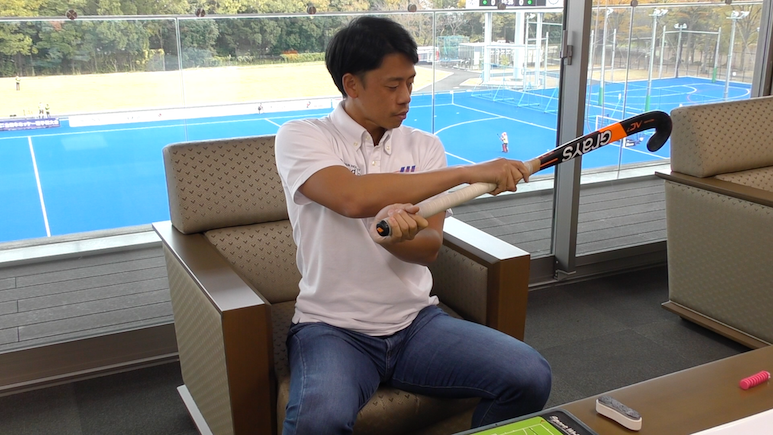
Basically, DF players want to drive the opponent and the ball to their own right side, where they have the advantage, because if they can take the ball on their fore side and go forward, they can attack smoothly when they move on to the next attack.
Part 7-2: How to take the ball away
Taking the ball with the combination between DF players
In Hockey, players have to concentrate on the ball when they control it. Hockey players, like Soccer players, look around in this way, and in Soccer, many players can control the ball with their feet without watching the ball in this position, but in Hockey, it is difficult to receive the ball in this way in the position like this. Hockey players always watch the ball when receiving. Whether the time spent watching it is short or long depends on each player.
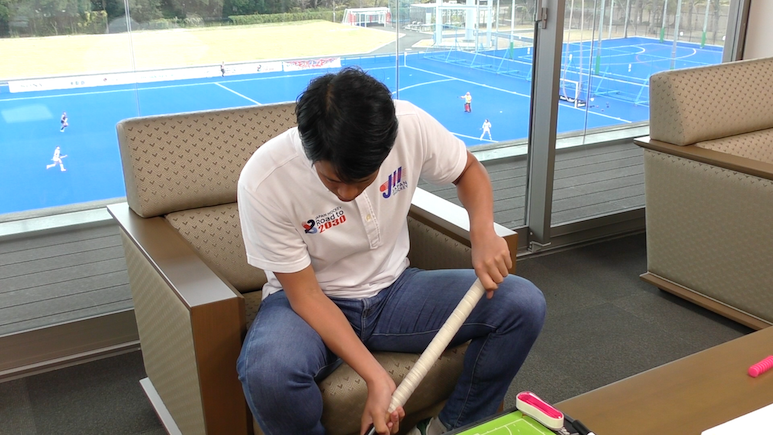
And the players move after watching whether the opponents are around them or not, but some players can only see the ball, for example. For example, when 1 DF player goes to put pressure on the Offense (OF) player, such player is so busy controlling the ball that he/she can only see only 1 DF player, and another DF player comes from a different way and often takes the ball with 2 or 3 players.
For example, if the 1st DF player leads OF player to dribble to his foreside and then gets in front of OF player, such OF player will have to turn because his path is obstructed. And if OF player is so occupied with the turn that he/she does not see the 2nd DF player coming from behind, and such 2nd player often takes the ball during the Match and such way makes the possibility of taking the ball high.
Taking the ball from a dribbling opponent
It is very difficult to take the ball away when the ball and the opponent’s Stick are attached. When the opponent has the ball like this, it is easy to take the ball away if a player also has a forehand against the opponent’s forehand, but such a situation is not very common. This is because the opponent may float the ball over the Stick or pass it under the feet.
It is possible to take the ball away perfectly if players can put their Stick between the opponent’s Stick and the ball at the moment the ball and Stick are separated, or conversely, if the opponent hits their Stick at the moment they take the ball, which can be a foul.
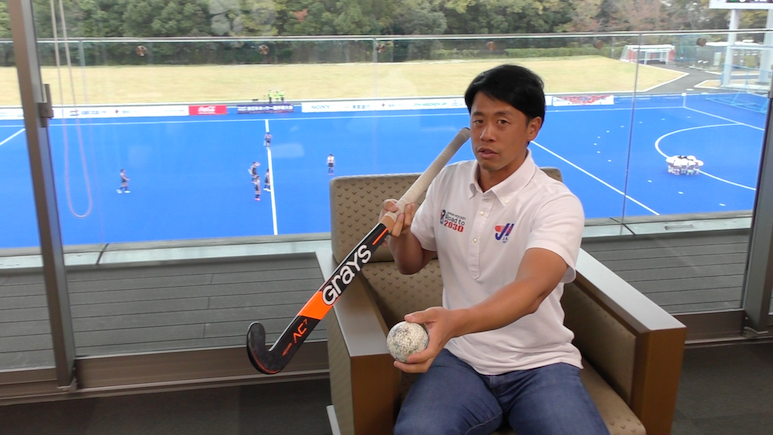
This kind of ball taking happens quite many, but DF players also need to be very advanced in timing and skill, so chances to get the ball are quite rare. In that sense, DF players need to be very patient in Hockey.
But DF will have a hard time if they have to be too patient, so the more they let OF touch the ball, the more OF has to watch the ball to control it, and if players touch the ball more, the probability of error gets high. DF players show their Stick to the opponent or feints that they are going to pressure the opponent, so that DF players work on the opponent instead of being passive. This is sometimes a way to get the ball by letting the opponent do this.
Situation in which DF has many players for taking the ball
In the own area, at a corner, it is often to try to take the ball with 2 players, and when the opponent’s feet stop, it is easy to create 1-on-2 or 1-on-3 situation. So it is quite common to make a narrow area target and try to take the ball in such areas, in other words, areas where tightly packed with the players of our side, and areas where players are further close to each other.
There are quite a lot of these situations near the line, and if DF drive the opponent into the middle area of the pitch, the opponent can get out in any direction, but by using the line in this way, the number of directions to get out is decrease to 3 because this side is reduced, and with the corners, there are only 2 directions to get out, so it is rather common for DF to go to pressure with a few players in such areas, and the chance to take the ball is quite high.
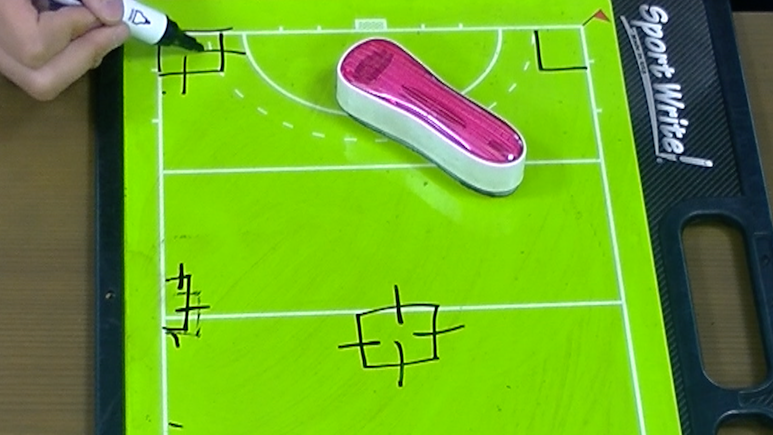
Also, depending on the formation, there are certain points where the ball is to be taken, and there are certain rules within the team how to take the ball when the opponent enters here, for example, just as in Soccer. However, the ball is still small in Hockey, so even if a DF player holds the Stick like this, the ball can go over here, the ball can slip through here, and even if the Stick is lowered, if the ball floats, it can be overtaken. It is difficult to reliably take the ball away from the opponent in Hockey.
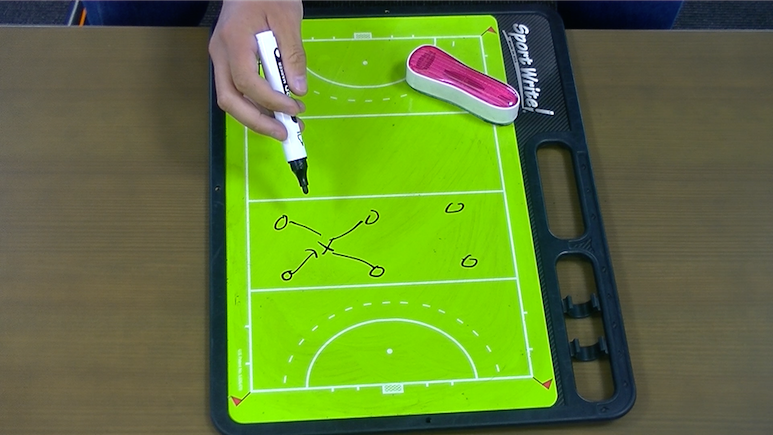
When taking the ball from the opponent, if DF cannot get the ball even though they have 4 players against 1 opponent, and if a DF player hits the opponent’s Stick, which results in a foul, and, as the opponent restarts the match, the risk is quite high, and also the ball is fast, so the situation can change quickly and easily, therefore, if players have a really advanced level of tactical understanding and skill, they can take the ball, but it is quite difficult and would have to be said honestly a problem.
You may think that generally FW players are well skilled, but DF players are actually setting up the opponent as well, so I think it would be interesting to see such aspect of the matches.
Part 7-3: Positioning of DF
Q: When DF players go to put pressure on the opponent, how do they think about positioning?
Players would change their position of standing depending on the team tactics. Basically, many teams take the tactic of concentrating their players to the middle. Then they can allow the opponent attack as long as it is from the side. If a team allows the opponent to attack from the middle, they may then attack not only from the right, but from left, or even from middle, but if the team leads their opponent to one side instead, it is easier to limit the opponent’s attack. In this situation, by surrounding the opponent on one side, it will be easier to lead the opponent’s attack, because if 10 of their own players come here, the opponent will have no path to pass.
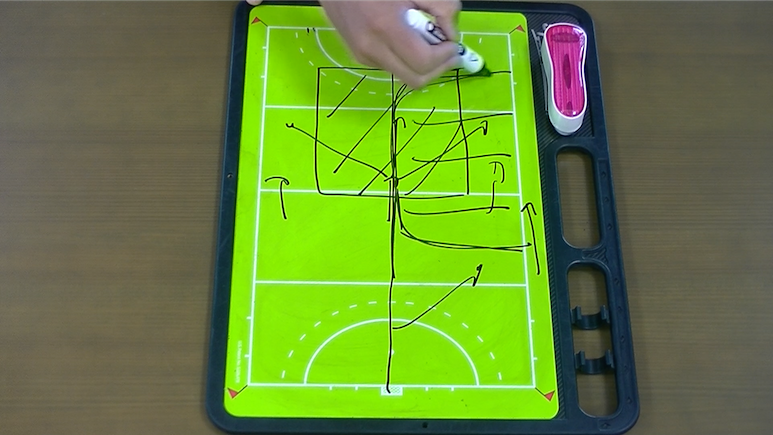
So, basically, players go for the opponent from the middle. However, for example, if a team wants to lead the ball to this side of the pitch, they will intentionally follow the opponent vertically and let the opponent dribble toward the middle, then another player will follow the opponent from the middle as well, driving the opponent toward this side and finally to the opposite side.
Thus, the “running line” would be changed like this, as each team has the tactic, some teams choose the tactic of following their opponents vertically, while other teams make a player follow the opponent from the beginning not to let the opponent allow to pass here and send the ball to this side without other choise. This changes depend on tactics, so by watching the way the players press, i.e., the “running line” of players who go for the opponent, you can see their intentions, for example, “This team will press this way,” or “This team is trying to take the ball here.”
Q: In general, is it easier to defend against an attack from the own right side than from the left side?
That’s right. When I am defending, it is easier to take the ball if the opponent comes to my right side. On the foreside, even if the line is on the side, DF players can get the ball with their forehand strongly and firmly by have their Stick out both hands like this, or by diving, however, on the left side, when they are defending from the inside and try to get the ball with their forehand, they would be quite limited because they have to turn their body like this.
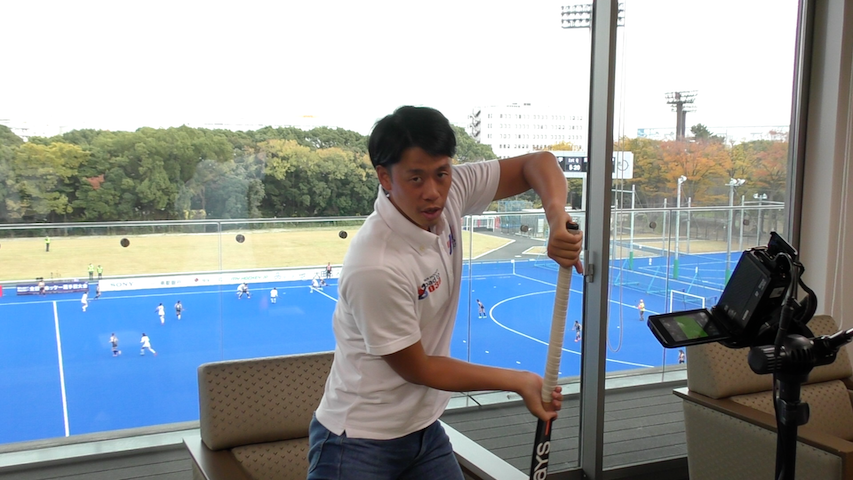
The ball often goes through if it comes to the left side as the Stick will be “Reverse” form like this, so it is easier to take the ball if DF players let the opponent come to their fore side as much as possible and defend in this way. And for the left DF players attacking, they may feel unease it if there is a forehand Stick in the direction they are going to attack. This is because they may think the ball might hit the Stick.
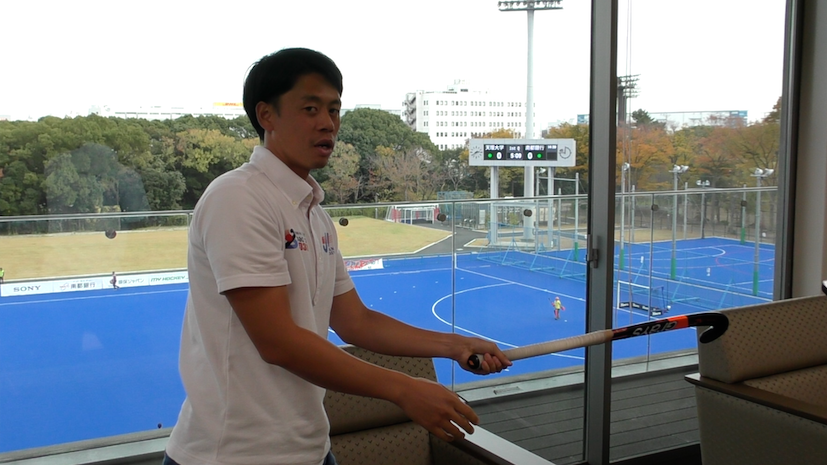
But if the direction they are going is to the left side of the opponent, such opponent has a Stick like this, so there is space on the left side. Comparing to pass the ball through this side when the opponent has a Stick like this, and to pass it through the other side, though the Stick may come out on the left side but there is no Stick originally on such side as the normal stance is like this, so it is easier to pass the ball on this side.
In addition, when having Stick out to the left side, it will be in “Reverse” form, and if the opponent send a fast ball, DF may make a mistake, so the basic theory is to drive the opponent to the foreside.
Part 7-4: Sweeper
Q: Are there any aspects of DF that are unique to Hockey comparing to Soccer?
It’s about the Defenders (DF) not lining up on the same line. In Soccer, there is an Offside rule, so DF players line up on the same line. But if DF players do that in Hockey, the ball will go over the back of DF. Because the opposing FW can enter behind DF.
To prevent such a situation, I call it “2 lines”, another DF player takes a position not on the DF player’s line here. Looking only at DF, we call it a Diamond, but DF often makes a square formation like this, and now they often put a “Free” player in front here, which we call Sweeper (SW).
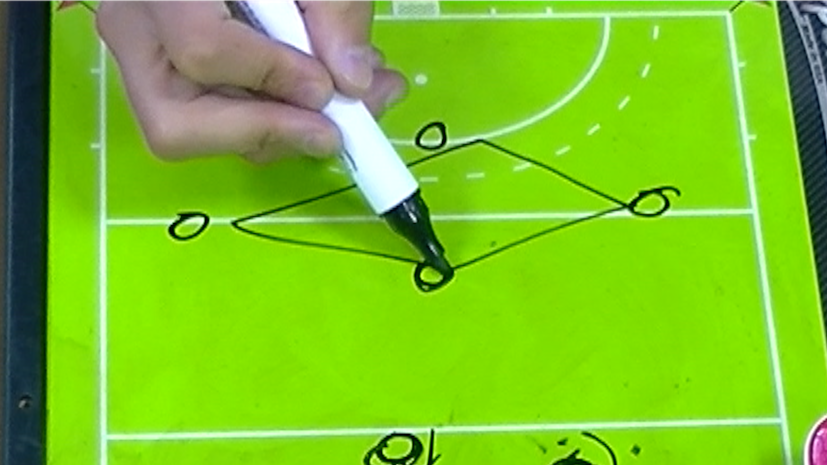
And DF players mark the opponent like this in this formation basically. Talking about the role of SW, if the ball is here for example, the basic positioning of SW is to stand on the line connecting the ball and the goal.
When DF make 3 lines in this way, they can create a system in which a player is here so the ball will not come through this area, another player covers this area so the ball will not come through, and similarly, this player covers here, this player covers here, and then this player can cover when the opponent crosses this player’s line.

By not lining up on the same line, if a player spills the ball or is taken behind by an opponent, the next player will come here, and another player will be ready here by coming back, and this is a common way among many teams.
Q: In Hockey, a Sweeper is placed in front of the DF line.
DF in the middle are SW and Stopper (ST), and generally the player here is ST, then this is SW, here is the Right Back (RB), and here is the Left Back (LB). Of course there are systems where SW plays behind, but it depends on the team.
Some teams will use the tactic of having a supporting player in the back depending on the opponent’s tactics, for example, if the opponent hits the ball in, a strong team on 1-on-1, or a team that sends many Scoop balls into the behind of DF. I think there are rather many men’s teams which has SW in front. In women’s teams, there may be many teams which has SW in the back, but I think there are probably about the same number of teams in which SW is in the front as in the back. Whether the free player is in front or behind depends on the team. But I think that in recent Hockey, there are many teams where SW is in front.
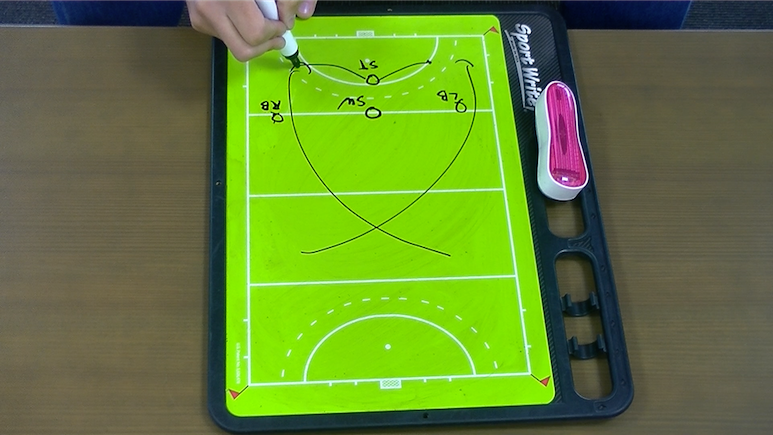
Q: So it depends on the skill level and tactics, right?
Yes, that’s right.
If the opponent is a team that often hits the ball in, there is a high probability that the ball will spill behind DF, and if the opponent has good dribblers, SW will have to go behind DF for support, so SW position will tend to be “low,” but conversely, if a team is stronger against the opponent, SW will need to be in a “higher” position to support that FW or MF to go to pressure the opponent from the front.
Of course, the role of SW players is to support all of the players, but where SW is to support is important, and by having SW go out, they can create a numerical equalizer or numerical advantage in such area, so where they support and where SW will position depends on their tactics, which will be led by the scouting on the opponent.
When the opponent’s 4 DF are very unstable, and if a team takes the tactic of raising 4 FW of their own, SW will have to watch someone of the opponent’s MF. They have to push MF out, so in those areas, even SW may defend man-to-man basis.
But basically, the premise is that SW takes a stable position in the middle and is always in the middle to prevent the opponent from attacking the middle. So each team has a different type of SW in terms of whether SW is mobile or that stays solid in the back and only supports DF.
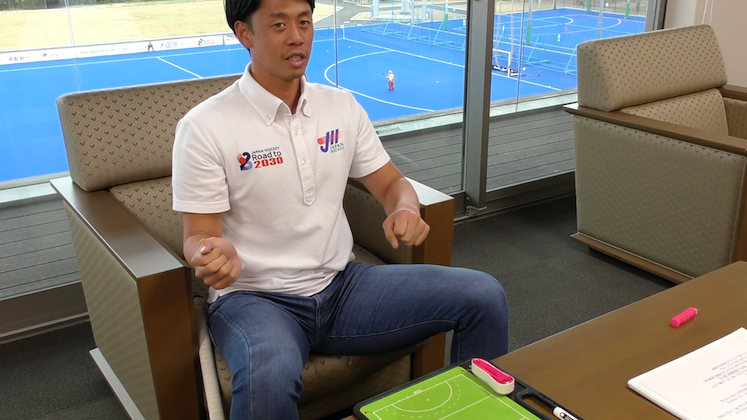
Teams with solid Defenses often have SW players who are rather mobile, and it is often the case that SW cuts off all of the opponent’s long balls.
While there are SW being good at cutting the long balls with the excellent predict, on the other hand, there are SW who are exquisitely good at covering, that is, SW who come from behind and steal the ball from the opponent while DF is in a 1-on-1 match, therefore, as SW is the key player of the team, so I think the type of SW is very interesting to watch.
Part 7-5: Response to Counter Attacks
How to delay counter attacks
If a player here dribbles and the ball is taken here, the taken team basically defends the area in the middle of the pitch first. The reason is that if the opponent connects the ball to the middle area, it gives them the option to go either right side or left side from there.
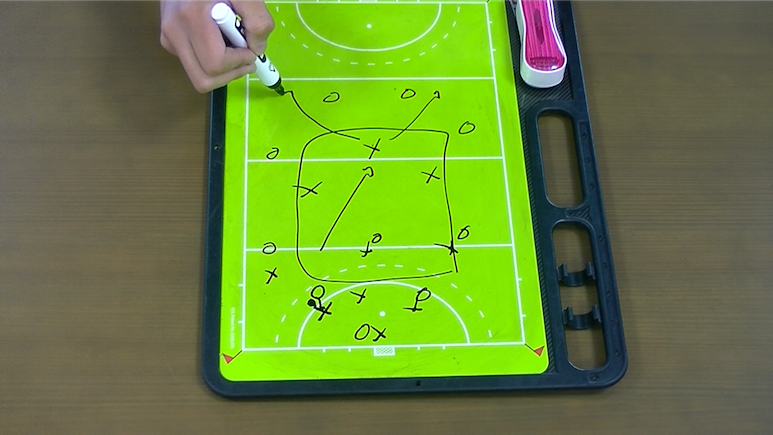
A mature team will probably drive the opponent to this side of the pitch, as the theory goes, but it is difficult for DF players to quickly determine which side to drive the opponent to.
A Counter Attack often occurs just after the ball is taken, and the opponent connects the ball to the middle area at the moment the ball is taken, and furthermore, players on both sides come running up, and as DF players, there is often confusion as to which player to get on and who to go to. In order to prevent such attacks, the player who has been taken the ball tries to take it back first, and other attacking players come back to the middle as soon as possible.
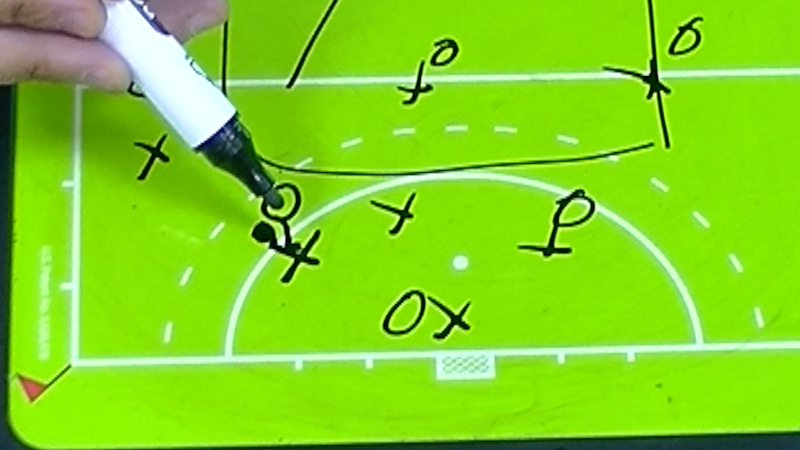
Upon having other players gather to the middle area, the player who was taken the ball will try to delay the opponent’s play. Like this way, DF makes the opponent connect the ball to the outside while attacking. While the opponent is taking their time to connect the ball outside, every players comes back to the ball line, this line, and once again set up a DF formation.
Counter Control
If a team has not prepared anything, the opponent can easily connect to this FW player, and from here, for example, if this player has individual skills, he/she can dribble even if there are 4 DF players. Or they can create a situation of 4 DF vs. 3 OF, or in some cases, a risky situation of 3 DF vs. 3 OF.
In order to prevent such a situation, first of all, this player who has lost the ball should first put pressure on the opponent at the moment the ball is taken, in order to prevent the opponent from freely playing. Or, a player nearby will go to put pressure on the opponent with releasing the opponent who should be marked by him/her.
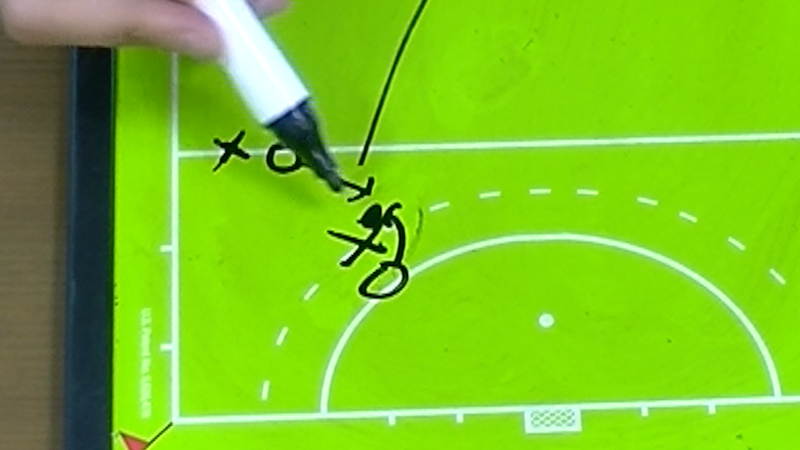
Then try to make the opponent send the ball to the outside. Because a lateral pass takes a more time to get close to the goal. In the meantime, other players can come back even about 3 or 4 steps, and players drive the opponent outside while doing so, and even if the ball is put outside, another player go once more, and here they delay the opponent firmly. In order to delay the opponent, DF make this player dribble, and since dribbling is slower than passing, players come back.
Or, many teams intentionally get fouled and play the ball somewhere, thereby delaying the opponent’s restart and allowing DF to come back in the meantime as a team tactic.
Also, the opponent probably has 3 FW left, so DF players are always thinking about “Counter Control” to avoid being connected the ball to these players, even while they are on Offensive. First, this DF player comes up to mark this FW player here so that the opponent cannot send the ball to FW player. And also mark this player here. The player here is also marked like this. In such a situation, if these players are marked like this at the moment the ball is taken here, this player will have no choice but to dribble.
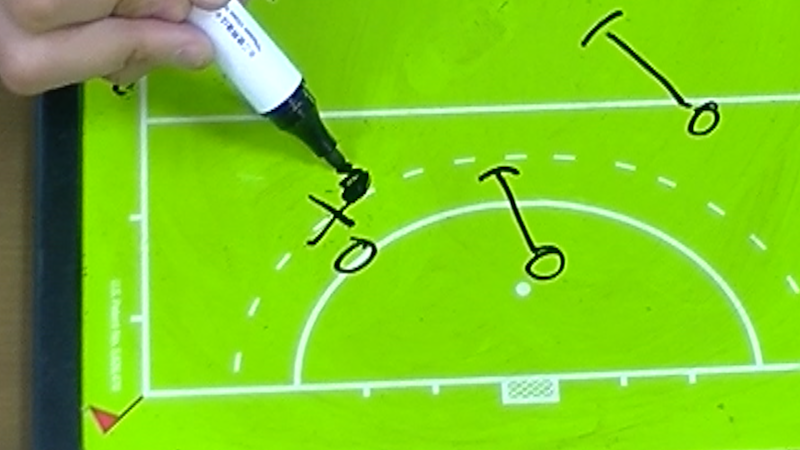
Then, if this player cannot pass to a teammate and dribbles, this player can go for pressure by dashing. Furthermore, if there are still 4 DF in this area, another player can take a position behind as cover if a mistake is made here. Or 1 player may be placed in front of the other DF.
By doing this, a tactic in which if the ball is sent here and this player is overtaken by the opponent, this player can cover for him, “Counter Control,” with which to control the opponent not to do the counter attacking, is often seen in the matches.
Share this content:
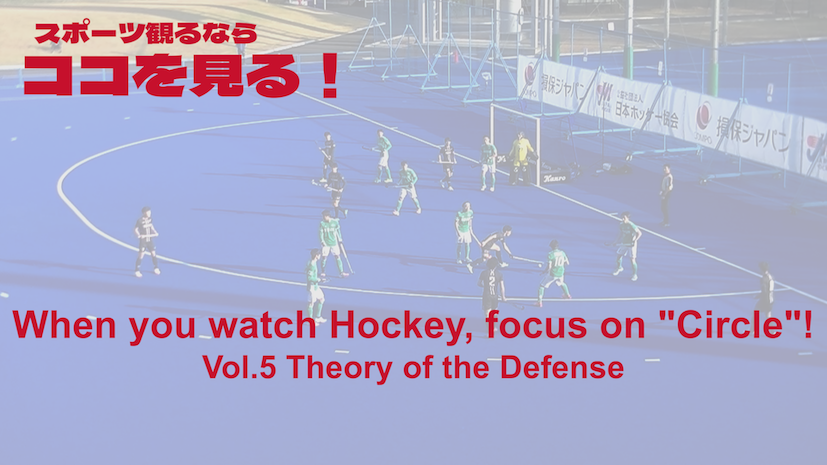
コメントを残す